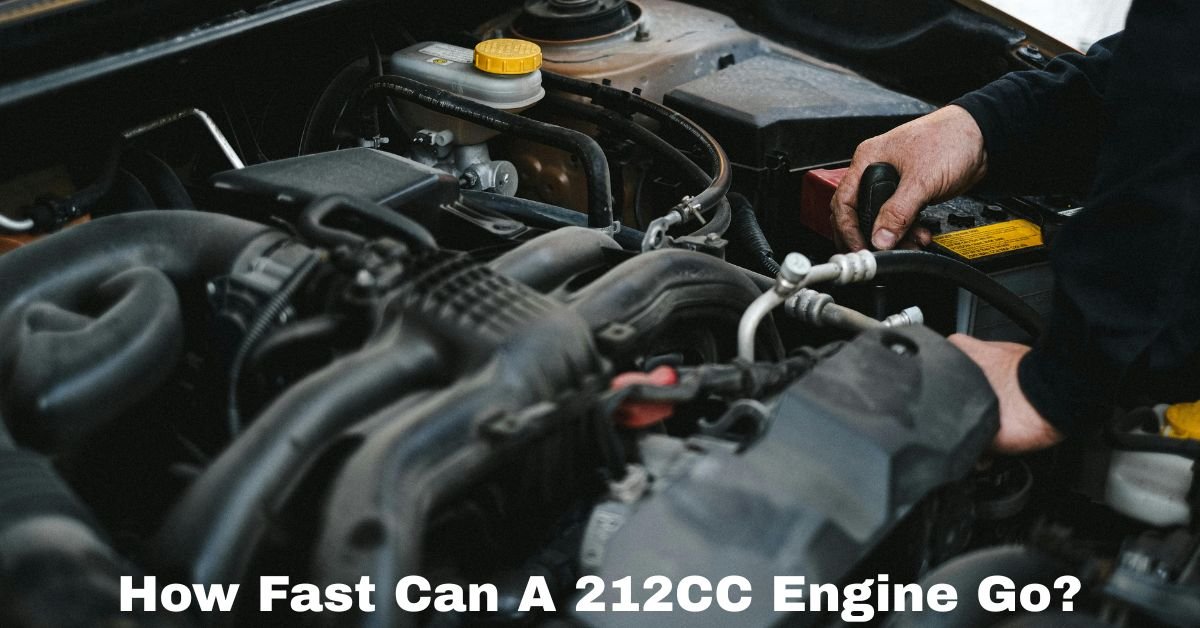When it comes to small engines, one of the most frequently asked questions is, “How fast can a 212cc engine go?” Whether you’re building a go-kart, minibike, or looking at modifying a lawnmower engine, the 212cc engine—like the popular Predator 212—is a staple in the small engine community. Let’s break down what “212cc” really means, what kind of performance you can expect, and how you can safely boost the speed of such an engine.
How Fast Can a 212cc Engine Go?
Understanding the 212cc Engine
The “212cc” refers to the engine’s displacement—how much volume the engine’s cylinders can displace during one complete cycle. This measurement doesn’t directly tell you the speed but is closely tied to power output. A 212cc engine generally produces around 6.5 horsepower in stock condition. While that may sound modest, it can deliver a surprising amount of speed when installed in a lightweight vehicle like a go-kart or minibike.
The most popular example of a 212cc engine is the Harbor Freight Predator 212, known for its reliability, affordability, and ease of modification. Other similar engines include models from Honda (like the GX200) or clones from brands like DuroMax and Tillotson.
How Fast Is It Out of the Box?
In its stock form—with no upgrades or tuning—a 212cc engine on a typical go-kart or minibike can reach speeds of 25 to 35 miles per hour (40 to 56 km/h). Several factors determine the actual top speed:
- Weight of the vehicle and rider
- The relationship between the driven and driving sprockets is known as the gear ratio.
- Tire diameter
- Terrain (flat vs. hilly surfaces)
- Wind resistance and aerodynamics
For example, a Predator 212 engine in a minibike geared with a 6:1 ratio and using standard 12-inch tires will often hit a top speed around 30 mph, assuming no rev limiter is engaged.
What Limits the Speed?
The biggest limit on speed for a stock 212cc engine is the governor—a built-in device designed to limit the engine’s RPM (revolutions per minute), usually to around 3,600 RPM. This helps prevent engine damage but also caps performance.
Another factor is the gear ratio. A lower gear ratio (e.g., 6:1) gives better torque for acceleration but limits top speed. A higher gear ratio (e.g., 4:1) increases top speed but sacrifices low-end power, which might not be ideal for heavier riders or uphill terrain.
Must Read: How Do You Fix A Cracked Engine Block?

Modifying the Engine for Higher Speeds
If you’re interested in pushing your 212cc engine beyond its stock capabilities, the good news is that these engines are very mod-friendly. With some upgrades, you can easily double your top speed. Here are common modifications:
- Remove the Governor – This allows the engine to rev past 3,600 RPM, often reaching 5,000–6,000 RPM with proper tuning.
- Upgrade the Carburetor and Air Filter – Better airflow increases combustion efficiency and power output.
- Install a High-Performance Exhaust – Reduces backpressure and boosts engine breathing.
- Add a Torque Converter – Replaces a simple clutch and offers variable gearing, improving both acceleration and top speed.
- Change the Jetting – Tuning the carburetor to optimize air-fuel mixture at higher RPMs.
With these mods, a 212cc-powered kart or bike can reach speeds of 45 to 70 mph (72 to 113 km/h)—though it’s important to note that going beyond 6,000 RPM without upgrading the internal engine components (like the connecting rod and flywheel) can be dangerous.
Safety and Legal Considerations
As you increase the speed, you also increase the risks. High speeds require stronger brakes, better tires, and a stable frame to prevent accidents. Always wear proper safety gear—especially a helmet—and never operate high-speed minibikes or karts on public roads unless they’re street legal.
Also, check your local laws. In many areas, operating these vehicles at high speeds or in public spaces can be restricted or require permits.
Final Thoughts
So, how fast can a 212cc engine go? The short answer is:
- Stock: 25–35 mph
- Modified: Up to 70+ mph (with the right setup)
The 212cc engine offers a great balance of power and mod potential for DIY builders, racers, and hobbyists. With the right modifications and safety considerations, you can unlock thrilling performance from a seemingly humble engine. Just remember: more speed means more responsibility.
